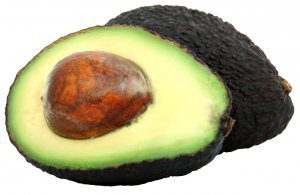Magnesium While Intermittent Fasting
Table of Contents
Magnesium While Intermittent Fasting
Intermittent fasting is a practice in which you eat for a shorter period and fast for longer. It doesn’t require a reduction in calories, yet it is effective. Intermittent fasting improves metabolism, lowers insulin levels, and may even prolong your life.
Besides helping you lose weight and lower insulin levels, intermittent fasting can make your body lose electrolytes like magnesium, affecting your bodily functions and leading to muscle cramps, weakness, irritability, etc. Continue reading to learn why you should take magnesium while intermittent fasting and where you may get magnesium.
How Electrolytes Help Your Body
The term “electrolyte” refers to a mineral that becomes electrically charged when dissolved in a solution. Electrolytes play a significant role in several vital processes:
- Keeping fluid balance is one of their primary functions.
- They also help muscles contract, keep your heart beating, and send messages to cells all over your body from your nervous system.
Intermittent Fasting Depletes Electrolytes
 You can’t make electrolytes in your body. So, you must take them through food. As a result of not consuming food during a fast, electrolytes are not being replenished in your body.
You can’t make electrolytes in your body. So, you must take them through food. As a result of not consuming food during a fast, electrolytes are not being replenished in your body.
Even if you follow a time-restricted feeding schedule (such as a 16:8), you will still miss out on electrolytes for up to 16 hours each day. Even those who do not fast are at risk of electrolyte deficiency. Supplementation may be necessary to keep your body running smoothly, especially if you’re fasting for an extended period.
Role of Magnesium in Your Body
Magnesium is an electrolyte, and as mentioned above, your body cannot produce magnesium, so you must take it from foods and drinks or supplements. There are many ways magnesium helps your body do everything from enzyme reactions to energy production to membrane function to calcium and potassium regulation. It also helps with cardiac and brain function.
Magnesium is also involved in transporting calcium and potassium ions across cell membranes. That’s why muscle cramping is a common indication of magnesium deficiency, which is why you might experience it while you’re on a fast.
Symptoms of Low Magnesium Levels
How can you tell whether you may be suffering from magnesium deficiency? Muscle cramps are one of the most common symptoms of magnesium deficiency. Other signs of magnesium deficiency include fatigue, tiredness, irritability, and vertigo. Magnesium levels can get dangerously low if you don’t pay attention to your body.
Recommended Dose of Magnesium Supplementation
The recommended daily allowance (RDA) for magnesium is 310-420mg for adults. Even if you’re not fasting, most people are at risk of subclinical magnesium deficiency, so you’ll likely require more than the RDA. Several studies have found that the magnesium balance was negative even when consuming close to the recommended amount, putting participants at risk for chronic disease and other long-term health problems.
Your Kidneys Excrete Magnesium While Intermittent Fasting
When you go on a fast, your body starts to get rid of magnesium to keep other electrolytes (i.e., calcium and phosphorus). Your kidneys can excrete magnesium at an alarmingly high rate during a prolonged fast. In one study, the kidneys of people on a multi-week fast excreted magnesium at a rate four to five times greater than normal.
It appears that the longer you fast, the more magnesium you lose. In various investigations into obese men who were on prolonged fasts, the daily magnesium loss was between 83 mg and 203 mg.
Therefore, a range of 400 to 600 mg of magnesium per day is appropriate while fasting to ensure that the body receives the critical magnesium it needs to function efficiently and avoid unpleasant symptoms of magnesium insufficiency.
Sources of Magnesium
You may easily meet your magnesium needs while intermittent fasting by eating foods high in magnesium and taking magnesium supplements.
Food Sources of Magnesium
Consider the following list of magnesium-rich foods: Consume these foods regularly to meet your magnesium needs.

- Almonds (80 mg/ounce)
- Spinach (78 mg/half cup)
- Pumpkin Seeds (168 mg/ounce)
- Avocado (44 mg/cup)

- Cashews (75 mg/ounce)
- Peanuts (64 mg/ounce)
- Salmon (23 mg/ounce)
Magnesium Supplements
Many types of magnesium supplements are on the market. The type of magnesium you choose will influence how, when, and where your body absorbs it. This is important for keeping magnesium levels steady all day and avoiding any problems with your stomach.
Magnesium Oxide – It’s one of the most common types of magnesium. If you’ve ever bought a magnesium supplement, this is most likely the one you have on your shelf. The disadvantage of magnesium oxide is that it might have laxative effects when consumed in large doses (such as those required during a fast). Because not all magnesium oxide is absorbed, it draws in more fluid and induces bowel movements once it reaches the small intestine.
You also have to be careful with magnesium oxide because your body only takes what it can and flushes the rest out pretty quickly. If you only take it once or twice a day, you won’t keep a steady magnesium level in your body.
Magnesium L-Threonate – It is a proprietary magnesium form developed by MIT scientists. It is more easily absorbed than all other forms of magnesium. Most effective for boosting magnesium levels in the brain. It boosts brain health and aids in a good night’s sleep.
Magnesium is coupled to L-threonate in this form, which acts as a magnesium transporter and allows it to pass through the blood-brain barrier. Magnesium L-threonate has been demonstrated to have a soothing effect, which is why it is commonly used at night.
Magnesium Citrate – Magnesium of this type is commonly used to treat headaches and migraines. It is easily absorbed by the body and has few adverse effects. Magnesium citrate is a laxative that can help digestion when taken in greater dosages.
Magnesium Glycinate – It is another type of magnesium that is highly bioavailable and has been used to improve sleep, cognition, anxiety, depression, bone health, blood pressure and blood sugar regulation, migraines, and leg cramps.
This type of magnesium is generally well tolerated, with fewer side effects and fewer digestive difficulties than magnesium citrate.
Magnesium Sulfate – It is most usually referred to as “Epsom salts.” You get magnesium through your skin when you soak in Epsom salt. Taking Epsom salt baths isn’t the best way to get more magnesium, but they’re good for sore muscles and aches.
Slow-Release Magnesium – It is also gaining popularity and may cost a lot more because it uses cutting-edge technology to encapsulate the magnesium, usually wrapped in a lipid or fiber outer. It means that your body has to break it down before it can get the magnesium itself.
The Bottom Line
Magnesium aids in the maintenance of primary neurological functions and ensures that transmissions from the body to the brain, conversely, are properly functioning. As a result, it’s something you require for proper body functioning. It can also prevent muscle cramps and ensure that fasting for long periods does not exhaust you. It’s ideal for supplementing with multiple types of magnesium whenever you are fasting and need to take a slow-release form of magnesium to make sure your body gets enough magnesium throughout the day.



